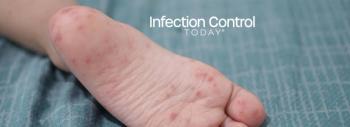
Telehealth Visits Produce an Antibiotic Prescription Rate Almost Half of In-Person Rate

Patient pressure is a key driver of primary care providers to prescribe antibiotics.
Even before the pandemic when telehealth became the norm, prescribing of antibiotics went down according to a study on a virtual poster presented at The
Nicole Mongilardi, MD, University Hospitals, and a fellow in Infectious Diseases at Case Western Reserve University, Cleveland, OH, and leading author, spoke with Infection Control Today® (ICT®) about differences in rate of antibiotic prescriptions, type of antibiotics prescribed, and infectious diseases visit diagnoses between telehealth and in-person visits.
“We wanted to see if primary care providers prescribe more or less antibiotics if they are in person versus when they are in telehealth setting. We did this because after the pandemic began, almost 80% of our consults were very unwell. So we needed to know if that would cause an impact in antibiotic prescription,” said Mongilardi to ICT®. “We found that before and during the pandemic, the prescription rate of antibiotics in telehealth visits was almost half as in-person visits. I was very surprised about this finding. This was for the past four years, so it was two years before the pandemic started, and the two years that were in the pandemic, and it was consistent. The prescription of antibiotics was higher in person.”
However, what surprised Mongilardi and her colleagues most was that “out of all the visits that we received, and patients received antibiotics, 90% had no infectious disease diagnosis with a visit. It would be like they received antibiotics for diabetes…There's a lot of room for improvement there.”
Mongilardi also said fellow attendees at the SHEA conference asked her about the discrepancy between telehealth and in-person antibiotic prescriptions: “‘Why do you think? What is driving this [lack of prescribing antibiotics during telehealth visits]?’ I've done a lot of primary care, and I have definitely felt the pressure of prescribing antibiotics in person,” the presenter told ICT®. There are studies that say that one driver of primary care providers to prescribe antibiotics is just the pressure of the patient and fear of patient satisfaction. So I think that is an area we should definitely explore more.”
Newsletter
Stay prepared and protected with Infection Control Today's newsletter, delivering essential updates, best practices, and expert insights for infection preventionists.






